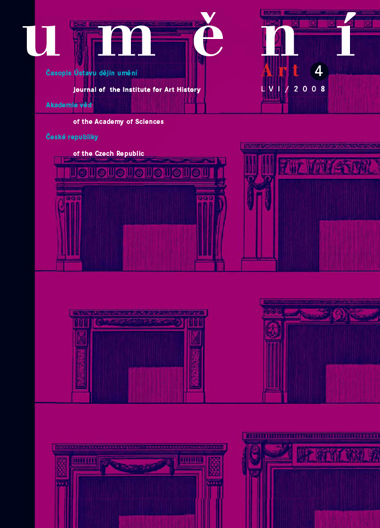Richard Biegel
Hledání "Edlen Einförmigkeit": barokní počátky (neo)klasicismu v Čechách
In 1789 a description of Prague was printed, in which the author wrote enthusiastically about the city's contemporary architecture, which had shed all unnecessary pomp and was characterised by a "sublime uniformity". Czech art history in the 20th century, however, views the period from the mid-18th century as a time of little innovation in Baroque form, which was gradually supplanted by an equally half-hearted Classicising décor, distinctly distorted by the deeply rooted "Baroque" outlook. In reality, the structures created out of this "half-hearted" Classicism are a good example of the remarkable creative power based in Prague, which was capable of creatively combining a domestic "Baroque" structure with the modern architectural "Classicist" idiom based directly or indirectly on a treatise by J. F. Neufforge, which in the French-speaking world was described as gôut grec. This synthesis put the Prague environment closer to the contemporary scene in Europe, more so than had thus far been thought. The first wave of "antiquity-mania" related in models more to decor than to architecture, and every artistic centre had then to synthesise it with more or less traditional forms, among them monumentalising Baroque and the models from the treatises of Serlio or Palladio. Prague architects drew their compositional foundation from both "early Baroque" orderly Praemerian architecture and the style of the Viennese Baroque at the start of the 18th century. There was a similarly creative transformation of traditional profane types of architectural structures, such as the municipal palace, which was reconceived as a firm part of the urban "scenery" instead of being a deliberately isolated structure, or the manor, which changed from a pavilion structure into a block residence, the urbanistic character of which could in some cases shape a wider area around the manor. The lack of interest among Prague architects in academic teachings and contemporary theoretical literature nonetheless meant that this architectural surge of the 1780s also marked Prague's swansong as an important Central European centre of art, and that after 1800 its architectural models would be imported directly from Vienna, Saxony and Prussia.
Full-text in the Digital Library of the Czech Academy of Sciences:
https://kramerius.lib.cas.cz/uuid/uuid:39faa4ca-7fb9-df41-2322-c2d8ce8142b8
< back

